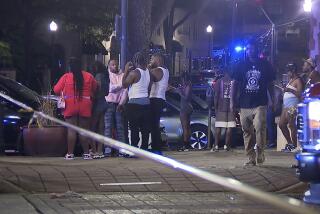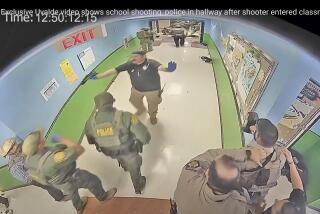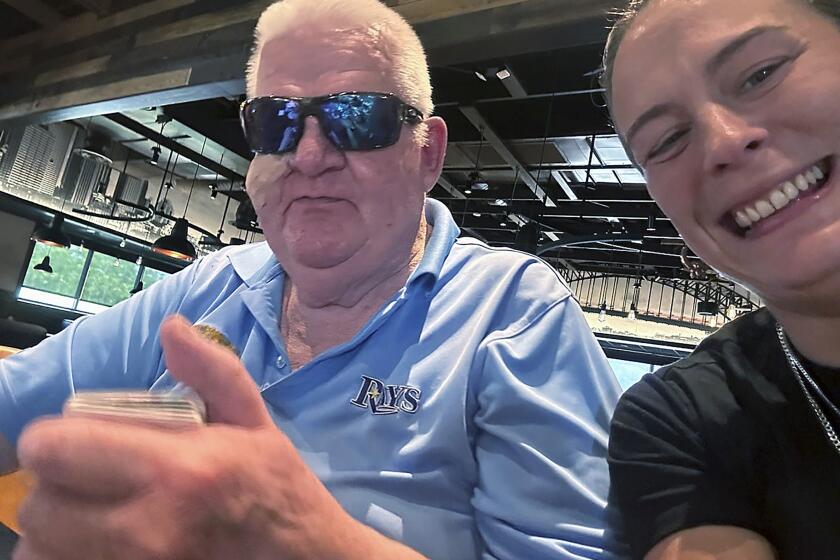Police face questions about delayed response to Orlando shooting
Law enforcement agencies and local city representatves give a press conference on Sunday morning regarding the Orlando Pulse nightclub shooting on June 12, 2016. (Jacob Langston/Orlando Sentinel)
At 2:02 a.m. on a muggy night in central Florida, a gunman traded shots with an off-duty police officer, slipped into a nightclub with a rifle and killed at least 50 people in the most lethal mass shooting in U.S. history.
At 5:05 a.m., a tactical unit stormed the club and the shooter was killed. The intervening three hours required responding officers to choose a strategy: Do they charge in on a barricaded suspect, risking hostage lives? Or do they negotiate with a mass shooter, hoping to save those still inside?
Police training on the subject has evolved since 13 people were killed by a pair of teenage gunmen at Colorado’s Columbine High School in 1999. At that time, many officers were taught to respond to a mass shooting by simply containing the scene, preventing violence from spreading.
But for many departments, the high death toll at Columbine prompted a reevaluation, with officers often opting to confront a shooter on the rampage as soon as possible, before he or she can inflict further carnage.
When the Bataclan theater in Paris was attacked by three heavily armed gunmen in November, tactical police units raided the hall within 35 minutes.
Now, the Orlando, Fla., Police Department is facing questions about the length of time it took to end a shooting at the Pulse nightclub early Sunday morning. Police said they treated the incident as a hostage situation for two hours before a police tactical unit arrived.
When they first arrive at an active shooting scene, police face a quick decision, said Suffolk County, N.Y., Chief of Patrol Stuart Cameron, who has written several academic journal articles about police protocol when faced with an active shooter.
If police rush in on a barricaded suspect, they risk the lives of their officers and the hostages. But if they delay in responding to an active shooter, that can also be risky: Analyses of past shootings suggest that one person is killed every 15 seconds in a typical mass-casualty shooting, Cameron said.
The onus for early action falls on the first officers to arrive. According to FBI statistics, in 57% of active shooting incidents, police were at the scene before the shooting ended.
The intent of the shooter is also critical, Cameron said, and he teaches officers to distinguish among suspects looking to knowingly commit a crime against an individual or small group; the mentally ill; and terrorists.
“If the shooting crosses into terrorism,” Cameron said, “that changes the equation.”
Terrorism suspects are less likely to let their hostages live, and may tell police during a mass-casualty incident – such as those in Mumbai in 2008 and in Paris last year – that they are willing to negotiate, only to prolong the media exposure of a terrorist attack.
“An important initial decision is, what are the consequences of taking action [or] not taking action,” wrote Leroy Thompson, paramilitary trainer and author of “The Hostage Rescue Manual.”
“Unless hostages or bystanders are being killed, once the incident is contained, the initial responders should try to slow things down.”
The guideline to officers Cameron trains is to run toward gunfire, Cameron said.
“But when the gunfire stops, you stop,” Cameron said. “You don’t know what’s going on inside there. He could have hostages, he could have killed himself or he could be waiting for you to come charging in without a plan.”
Orlando police referred questions about their protocol for responses to an active shooter to the FBI, which then referred specific questions back to the Orlando police.
The first reports of a shooting came at 2:02 a.m., when suspect Omar Mateen is alleged to have fired on an off-duty Orlando police officer working security, and then ran into the club, which held more than 200 people.
After the initial gunfire, police made contact with Mateen while he was inside the club, but police have not said what was discussed. At 3 a.m. Sunday, the nightclub posted on its Facebook page: “Everyone get out of Pulse and keep running.”
Details about exactly what happened inside the club were unclear, but police waited outside. Some media reports suggested that police were waiting to get armored vehicles on the scene and to make sure they had enough personnel to storm the nightclub.
At 5:05 a.m., police distracted Mateen with an explosive device and plowed into the building with a vehicle. Inside, they found 53 injured people, and 50 dead.
nigel.duara@latimes.com
More to Read
Sign up for Essential California
The most important California stories and recommendations in your inbox every morning.
You may occasionally receive promotional content from the Los Angeles Times.











